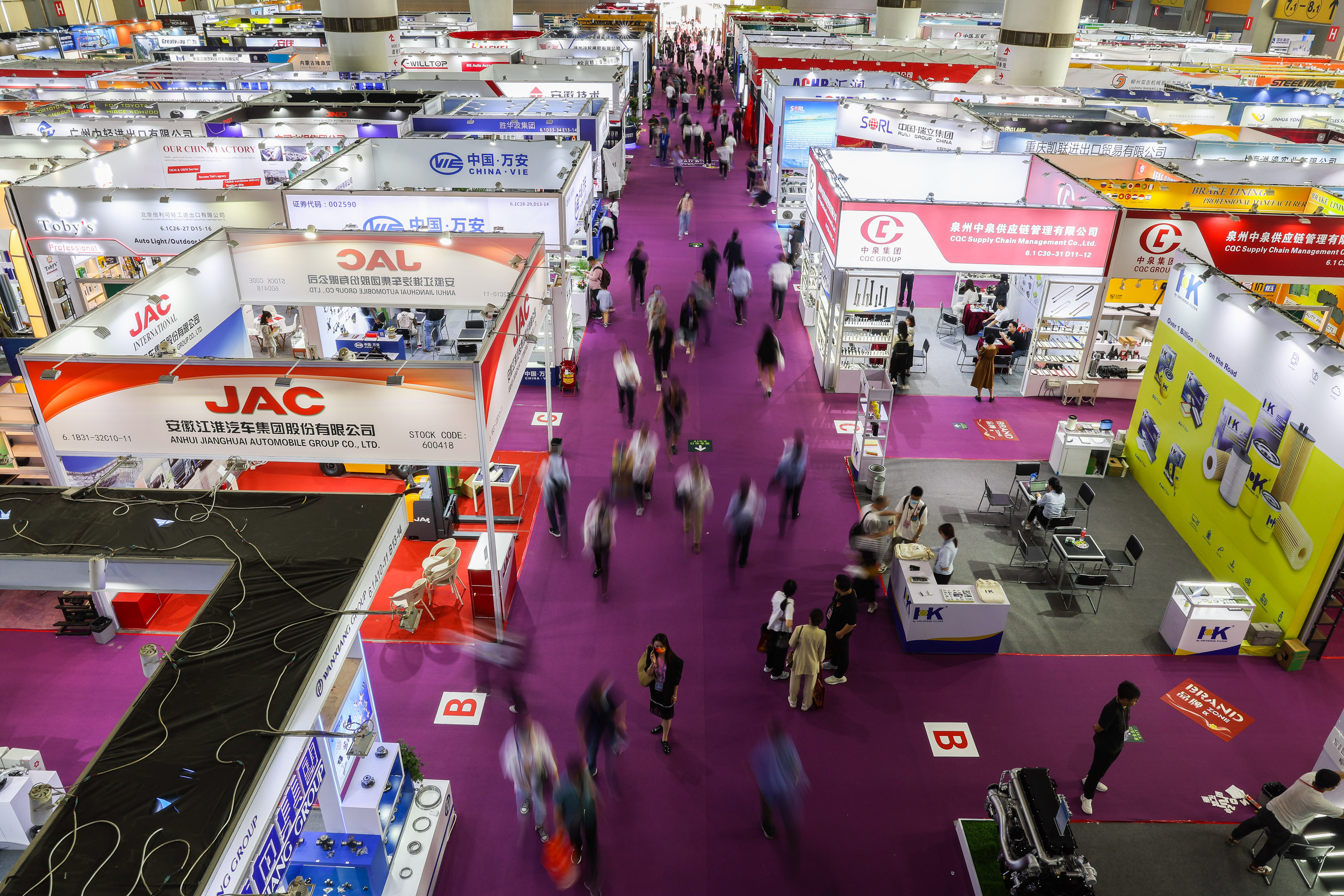Firms eye more opportunities at Canton Fair

Guests visit the Vehicles & Spare Parts exhibition section of the 133rd session of China Import and Export Fair, also known as Canton Fair, in Guangzhou, south China's Guangdong Province, April 15, 2023. (Xinhua/Liu Dawei)
The 133rd China Import and Export Fair, also known as Canton Fair, which lasted for 15 days, came to a successful end last week. This Canton Fair was held offline, and the scale hit a record level. International buyers from all over the world participated in the fully resumed on-site activities.
The exhibition area of the fair was expanded from 1.18 million square meters to 1.5 million square meters to house about 70,000 booths for nearly 35,000 enterprises.
-- New and old friends gathered at Canton Fair
In the third phase of the 133rd Canton Fair, textile and garment enterprises can be regarded as the main force, with as many as 4,800 exhibitors. In the Canton Fair's new products debut activities, the successive unveiling of new clothing products earned a lot of attention, among which, a foreign trade garment enterprise from Guangzhou brought environmental protection clothing, attracting buyers with its new biodegradable fabrics.
Fang Wujun, deputy general manager of Guangzhou Textiles Holdings Limited, said that they brought a full range of clothing products that integrate green and environmental protection, using natural biodegradable fiber fabrics. At present, overseas customers are paying more and more attention to the concept of environmental protection, and they generally ask about this issue, because nowadays, different countries and regions have started to pay attention to the standard certification of recycling.
After three years of online exhibition, this year's Canton Fair resumed offline exhibition, for which this garment enterprise has riveted its efforts to promote new product development in advance, hoping to take more orders.
In fact, the relocation of labor-intensive textile and garment industries to Southeast Asia has always been the case, said Feng, adding that strengthening R&D innovation and moving toward brand management is an inevitable choice.
The resumption of the offline exhibition enabled enterprises to have the opportunity to market their products face-to-face. To see each other and touch the fabrics is crucial to the negotiation of clothing orders.
Zhai Hui, deputy general manager of Guangzhou Light Holdings Limited, said that they can feel that the Canton Fair has largely recovered to the customer volume before the epidemic, and they can receive dozens of business cards from new customers every day. Customers from the Belt and Road countries and Russia are more than ever.
It is learned that the on-site export transaction volume of this year's Canton Fair reached 21.69 billion U.S. dollars, better than expected. In the 15-day exhibition period, the offline participation of foreign buyers exceeded 129,000 people.
The exhibitors generally believe that although the attendance of overseas buyers is still recovering, they are more willing and faster to place orders. In addition to on-site transactions, many buyers have also made appointments to see the factories on-site and are likely to reach more cooperation in the future.
-- Canton Fair witnesses China's industrial transformation
As a large exhibition mainly focused on export trade, each booth in the Canton Fair reflects the level of the Chinese manufacturing industry in its field. In recent years, electric passenger cars, lithium batteries, and solar cells have become the "new three star products" of China's foreign trade exports.
Zhou Songyi, general manager of Guangzhou Tiger Head Battery Group Co., Ltd. pointed out that the company has achieved good results in this Canton Fair, with orders amounting to about 6 million U.S. dollars. More than 90 percent of the intended orders were signed with new customers.
The company has participated in the Canton Fair 78 times since it first set up its booth in 1984, and the star product on the booth has changed from dry batteries to energy storage products.
The company has found that most of the customers interested in energy storage products are among the Belt and Road countries, and the composition of customers tends to be diversified. This requires the products to be tailored to local conditions, and the degree of customization needs to be improved. Next week, the company will take a field trip to Africa and visit the interested customers at the Canton Fair again to further pave the way for the transformation of export sales.
-- Canton Fair radiates to art field
Dafen Village in Shenzhen, south China's Guangdong Province, was once the best site for European and American oil painting orders to look for cheap labor, and has gradually become a foundry for mass production of oil paintings.
Copying and reproduction of oil paintings used to be Dafen Village's way of survival, and the peak of production value was ushered in around 2005. At that time, 70 percent of the oil paintings in Europe and America came from China, of which 80 percent came from this village. Dafen Village was called the first village of oil painting in China since then.
Zhou Feng, founder of a cultural group in Dafen Village, said that he started to do cross-border e-commerce via the Internet and the customers accumulated were relatively minor in scale, while in the Canton Fair, he gained some large customers.
Founded in 1957, the Canton Fair is held twice a year in spring and autumn, with a total duration of more than one month, and has become an important platform for promoting China's foreign trade. The Canton Fair is both a microcosm of China's opening up to the outside world and a witness to the transformation of Chinese industry.


